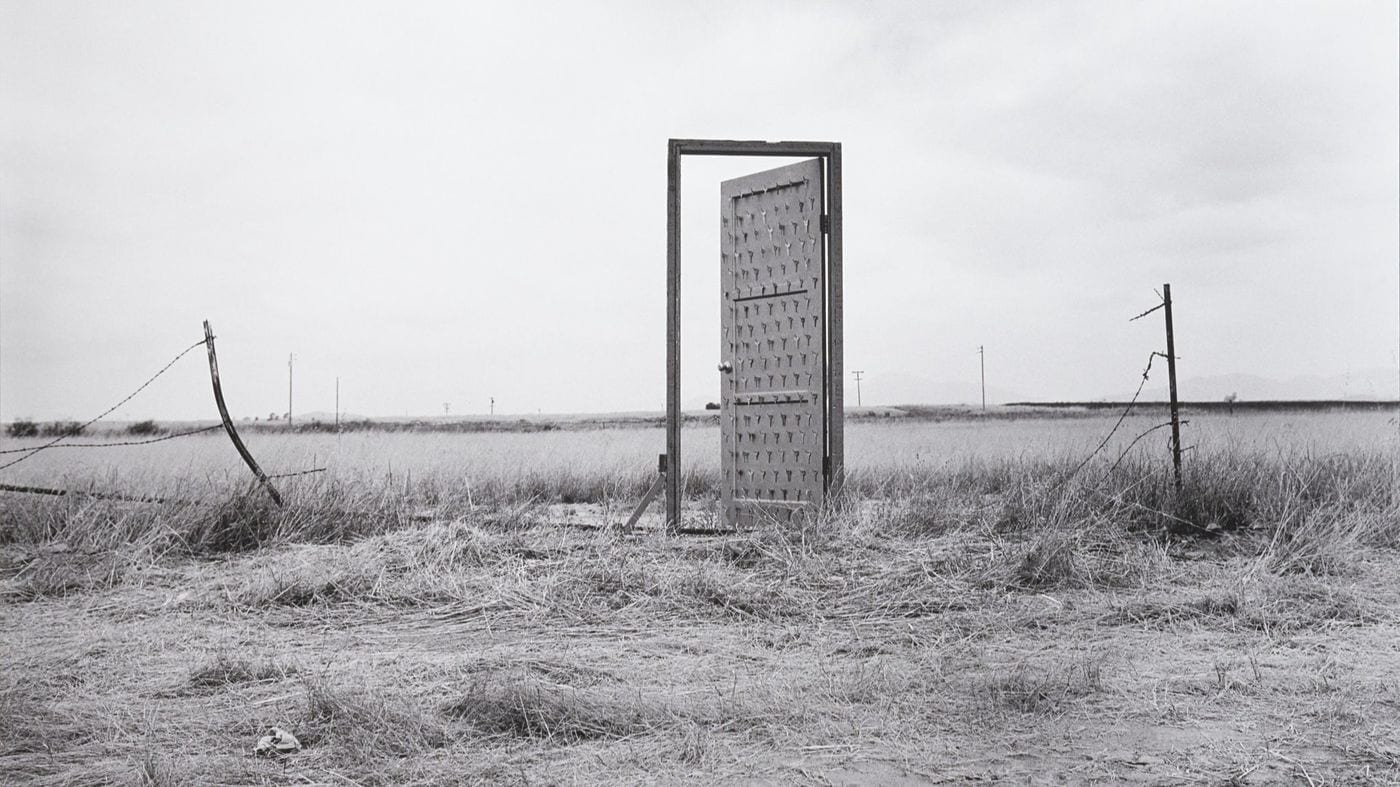By now, Richard Lou, chair of the University of Memphis’ Department of Art, is accustomed to the global reach of his works. Last year, The Los Angeles Times described his “Border Door” performance art on the United States-Mexico boundary in 1988 as a “landmark sculpture.” A photograph of the “Border Door” has graced the cover of books on political science and colonialism in Latin America and even, yes, a novel.
Two more covers are on the way.

This spring, “Chicano and Chicana Art: A Critical Anthology” (Duke University Press) will feature photographer James Elliott’s picture of Lou’s artwork on its cover. Edited by Jennifer A. Gonzalez, C. Ondine Chavoya, Chon Noriega and Terezita Romo, “Chicano and Chicana Art” details the history and theory of that artistic style from the 1960s to today’s heightened political climate.
“Border Door” will also grace the cover of an upcoming edition of NACLA Report on the Americas magazine.
“It’s been used a lot,” Lou said. “I’ve even seen it as a poster for a conference a couple of times that I wasn’t asked about, but I saw what the conference was about and said, ‘OK, fine.’”
Lou was born in San Diego but grew up in Tijuana, Mexico, crossing the border each day for several years to go to school. The impression of those experiences didn’t diminish once he began his artistic career.
“Every day for, I guess, three years at least, we were interrogated at the border, so the questioning of my identity became very formative as far as constructing my world view,” Lou said. “There is a sense of your legitimacy being questioned — Where are you going? What are you doing? What business do you have (in the United States)? — every day. And then when you come back, you just breeze through at the end of the day.”
On May 28, 1988, Lou took a spare door culled from his parent’s backyard to the Mexican border with the United States. A quarter-mile from Tijuana’s Rodriguez International Airport, Lou installed his artwork, the fully operable, free-standing wooden door facing Mexico. More than a hundred symbolic keys were attached to the door’s Mexican side.
“The artist’s choice of that specific, hardscrabble Otay Mesa site endowed the open door’s functionality with a wryly absurdist twist: To cross over the border from Mexico to the United States, a person could just as easily walk around the sculpture, key or no key,” The Los Angeles Times wrote.
The door didn’t remain in place long. Lou returned to the site two days later and found it destroyed.
“I don’t really know” how long it remained in place, he said. “It might have stayed up for hours or just a day. I speculated that the border patrol probably destroyed it. It was smashed to bits.”
The legacy of Lou’s performance art and the images captured in Elliott’s photograph have combined into a must-have image for authors writing about immigration, art and Chicanx and Latino culture. Previously, “Border Door” has provided the cover art for:
- “Sovereign Acts: Contesting Colonialism Across Indigenous Nations and Latinx America,” Frances Negrón-Muntaner (Editor).
- “The Politics of Borders: Sovereignty, Security, and the Citizen after 9/11,” by Matthew Longo.
- “The Valley,” by Rolando Hinojosa.
“With these three,” Lou said, “the authors felt that this image encapsulates the spirit of their work somehow.”
With the soon-to-be published “Chicano and Chicana Art: A Critical Anthology,” Lou gazes at the names of those whose works are included along with his artwork, and he smiles.
“These are the major writers in that particular field,” he said. “These are all like my heroes.”
— Phillip Tutor, CCFA media coordinator, potutor@memphis.edu




Be First to Comment